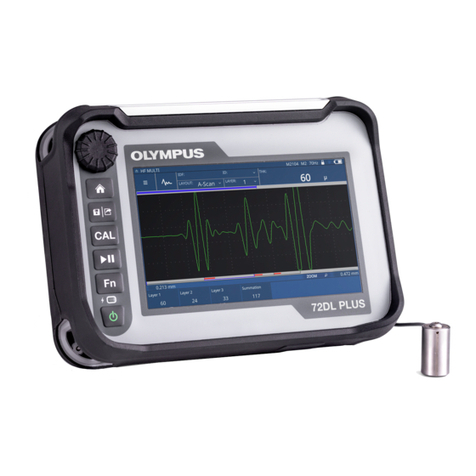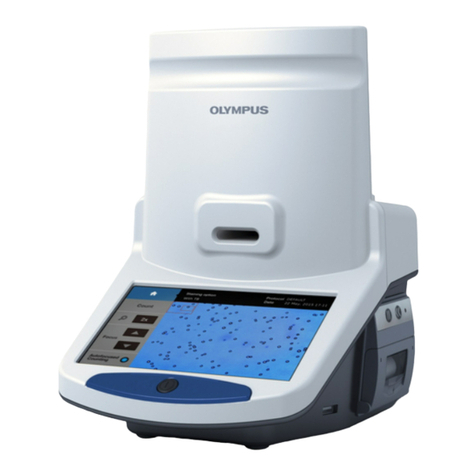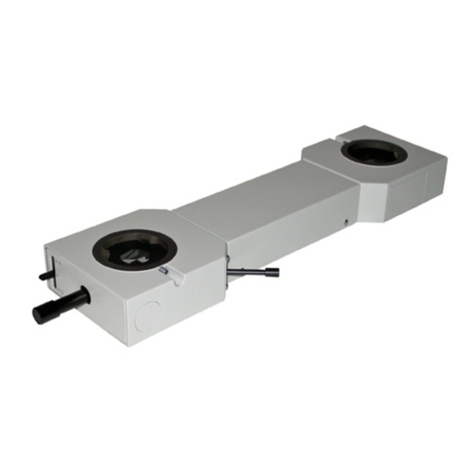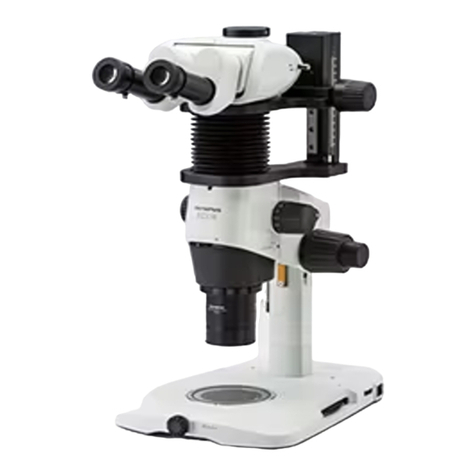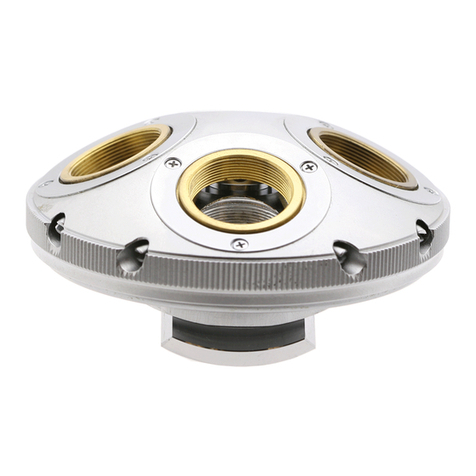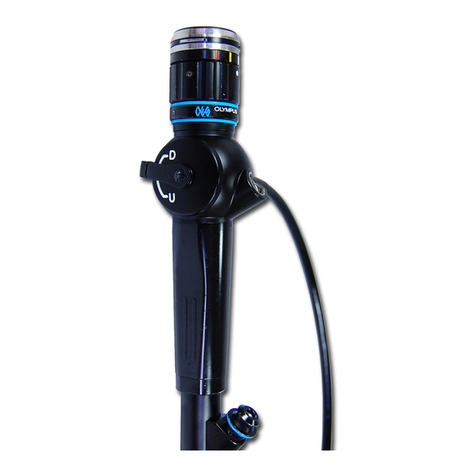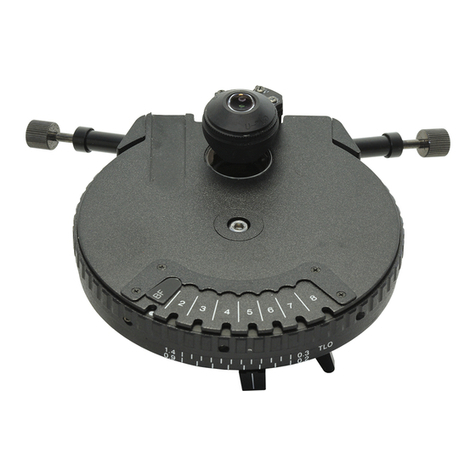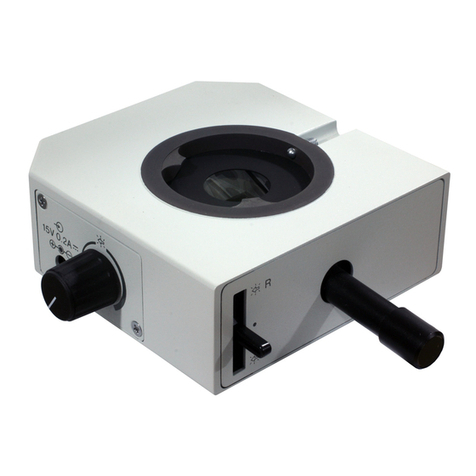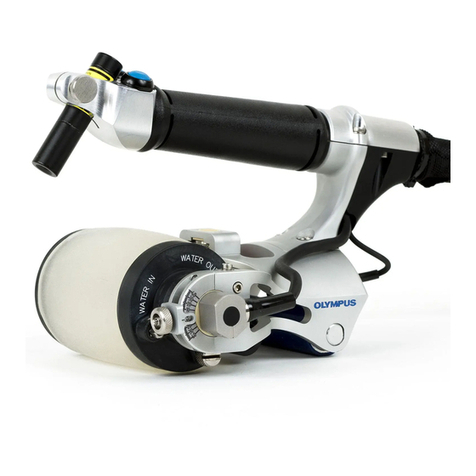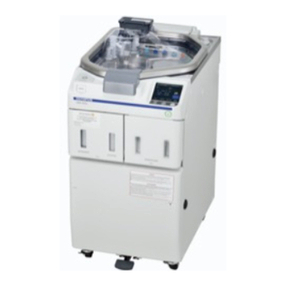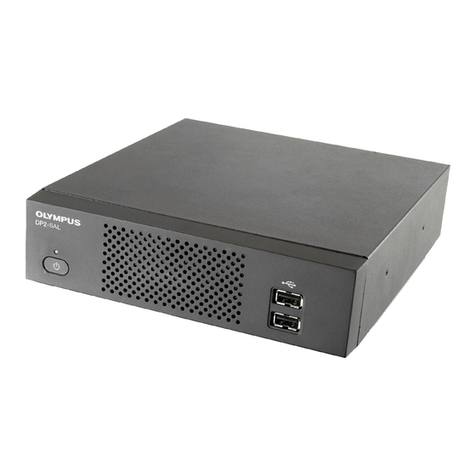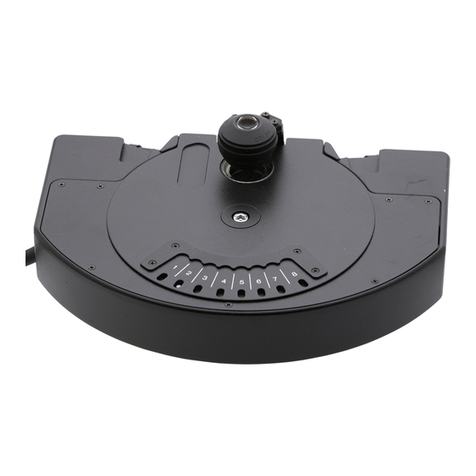
Special feature of OLYMPUS Micro cantilever
- 3e -
- 4e -
(BL-AC40TS-C2, BioLever mini)
1. 40 micron-long short cantilever
1 Preparation
1) Please prepare the followings before using OLYMPUS cantilevers.
2) To gain a better understanding of how cantilevers and chips are connected, cantilevers
should be inspected under the microscope.
1) Work environment
This cantilever probe is designed for AC mode AFM measurements in liquid. The
cantilever has been reduced to the minimum practical size for the optical beam deflection
sensors in most commercially available AFM. This small cantilever has a nominal spring
constant of 0.1 N/m, with a resonant frequency of approximately 25 kHz in water (or 110
kHz in air). The higher frequency in liquid allows faster imaging of soft biological samples,
and the short lever give a higher lever sensitivity with optical beam deflection sensors.
3. Pre-separated Chips
2) For hazard avoidance
3) For cantilever treatment
4) For inspection
2 Open the case
:Clean bench
(Use of an electrical charge neutralizer of ionizer is recommended.)
:Protective eye glasses
:Tweezers
(Use of anti-electrostatic discharge mat and a wrist band is
recommended.)
:Stereo microscope
The chips offered in tac carrier case, are separated in advance. The chips can be used in
AFM as soon as the case is opened.
4. Gold reflex coating
Gold/Chromium showing high reflection is employed as the reflex-coat material. Good
S/N ratio can be expected in optical deflection sensing.
5. Small auto-fluorescence
Auto-fluorescence light from the silicon nitride cantilever is lessened comparing to
Olympus OMCL-TR/RC series silicon nitride cantilever.
In AFMs combined with a fluorescence optical microscope, the less auto-fluorescent
cantilever doesn’t obscure the light from the fluorescently-stained samples of interest. It
also makes the cantilever alignment to the point of interest easy.
2. Sharp tip
The tip apex is sharp with tip radius of 10 nm (Ave.). The sharp apex will contribute to
your high resolution measurements. The tip apex is made of silicon with a tetrahedral
shape, ideal for achieving a point terminated tip. The apex is further sharpened with our
exclusive sharpening process.
The tip is a two-stage probe. Whole tip height is 7 micron and the effective tip height is 3.5
micron, longer than the tips of Olympus OMCL-TR/RC series. The long tip makes it
ossible to measure relativel
lar
e sam
les like bio cells.
Table of contents
1 Preparation
2 Open the case
3 Picking up the cantilever chip from the case
4 Tetrahedral tip in two stage structure
5 Trouble-shooting guide
7 Information
6 Tips for better measurements
8 Specification 1s
page
Please handle our cantilevers carefully because they are fragile.
Caution
It is recommended that precautions be taken to prevent damage to the
cantilever tips from electrostatic discharge.
Caution
1) It is recommended that the cantilever case be opened in a clean environment like a clean bench
in order to avoid the cantilever being contaminated. Handling under an ionizer is recommended.
2) Avoid wearing clothes like woolen sweaters, fleece etc that give off the static electricity when
handling the cantilever cases and chips. Use of an anti-electrostatic mat and wrist band is
preferable.
3) In opening the case, put the plastic case label-side down on a desk.
The cantilevers are tip-side-up as viewed in the case.
4) Open the case.
3 Picking up the cantilever chip from the case
See the specification sheet of OLYMPUS Micro cantilevers at the last page of this manual.
4e
4e
4e
Avoid any contact with the cantilevers when you pull up the
cantilever tip from the case.
Caution
5e
6e
9e
10e
1) Pick up the chip by the long side with the tweezers and mount it in the AFM.

